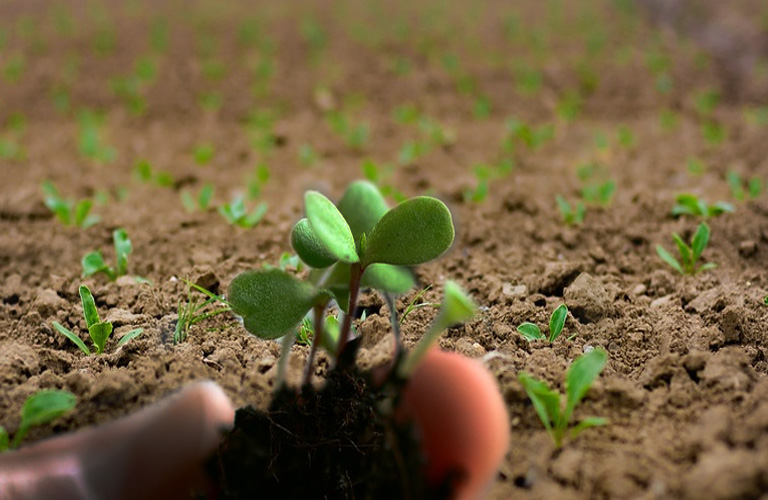The Soil and It's Preparation
When considering the matter of plant foods, we must proceed to the equally important part of gardening process, the one in which we are going to learn how to properly set up the table, on or rather in, plant food elements are going to be placed, before the plants can use them.
As you already know, most arable soils contain the necessary plant food elements to a considerable extent, but only in a very limited degree in available forms. They are actualy locked up in the soil larder, and only after undergoing physical and chemical changes may be taken up by the feeding roots of plants. They are unlocked only by the disintegration and decomposition of the soil particles, under the influence of cultivation--or mechanical breaking up--and the access of water, air and heat.
The soil is naturally classified in two ways: first, as to the amount of plant food contained; second, as to its mechanical condition--the relative proportions of sand, decomposed stone and clay, of which it is made up, and also the degree to which it has been broken up by cultivation.
The approximate amount of available plant food already contained in the soil can be determined satisfactorily only by experiment. However, almost all soils without exception need liberal manuring to produce good garden crops.
The ideal garden soil is what is known as a "rich, sandy loam," at least eight inches deep; if it is deep eighteen it will be even better. It contains the proper proportions of both sand and clay, and further has been put into the best of mechanical condition by good tilth.
That last word brings us to a new and very important matter. "In good tilth" is a condition of the soil difficult to describe, but a state that the gardener comes soon to recognize.
Ground, continually and properly cultivated, comes soon to a degree of fineness and lightness at once recognizable. Rain is immediately absorbed by it, and does not stand upon the surface; it does not readily clog or pack down; it is crumbly and easily worked; and until your garden is brought to this condition you cannot attain the greatest success from your efforts.
FIND OUT MORE:

We emphasized "properly cultivated." That means that the soil must be kept well supplied with humus, or decomposed vegetable matter, either by the application of sufficient quantities of organic manures, or by green manuring, or by "resting under grass," which produces a similar result from the amount of roots and stubble with which the soil is filled when the sod is broken up.
Only by supply of good quality humus your garden will have the chance to be kept in that light, friable, spongy condition which is absolutely essential to luxuriant vegetable growth.
"It is a golden maxim to cultivate the garden for the nose, and
the eyes will take care of themselves." ~ Robert Louis Stevenson
Did You Know?
Soil health, also referred to as soil quality, is defined as the continued capacity of soil to function as a vital living ecosystem that sustains plants, animals, and humans.
Soil contains living organisms that when provided the basic necessities of life - food, shelter, and water - perform functions required to produce food and fiber.
Only "living" things can have health, so viewing soil as a living ecosystem reflects a fundamental shift in the way we care for our nation's soils.
Soil isn’t an inert growing medium, but rather is teaming with billions of bacteria, fungi, and other microbes that are the foundation of an elegant symbiotic ecosystem.
Soil is an ecosystem that can be managed to provide nutrients for plant growth, absorb and hold rainwater for use during dryer periods, filter and buffer potential pollutants from leaving our fields, serve as a firm foundation for agricultural activities, and provide habitat for soil microbes to flourish and diversify to keep the ecosystem running smoothly.





